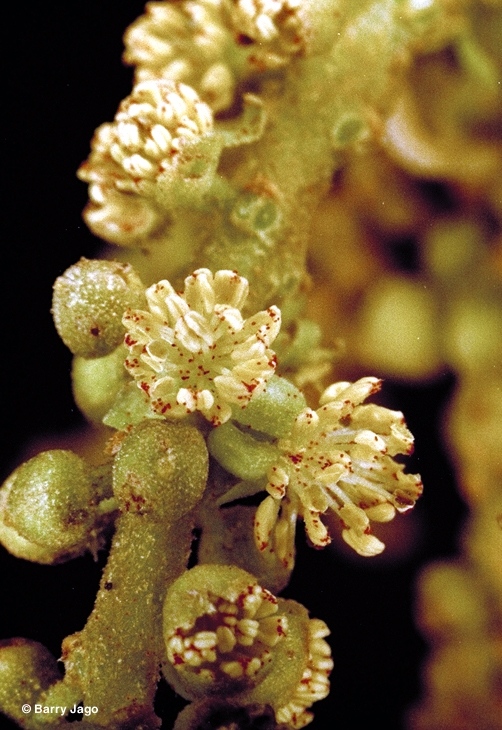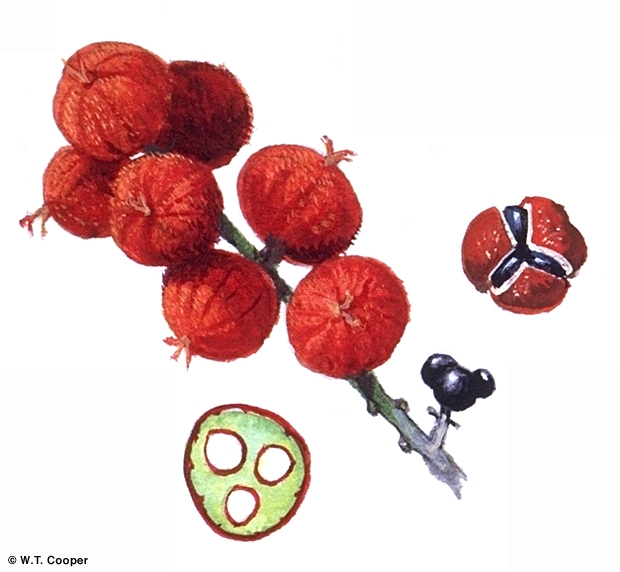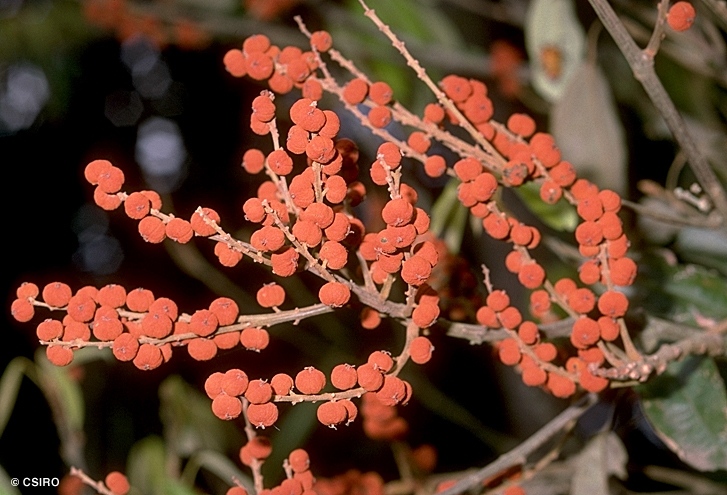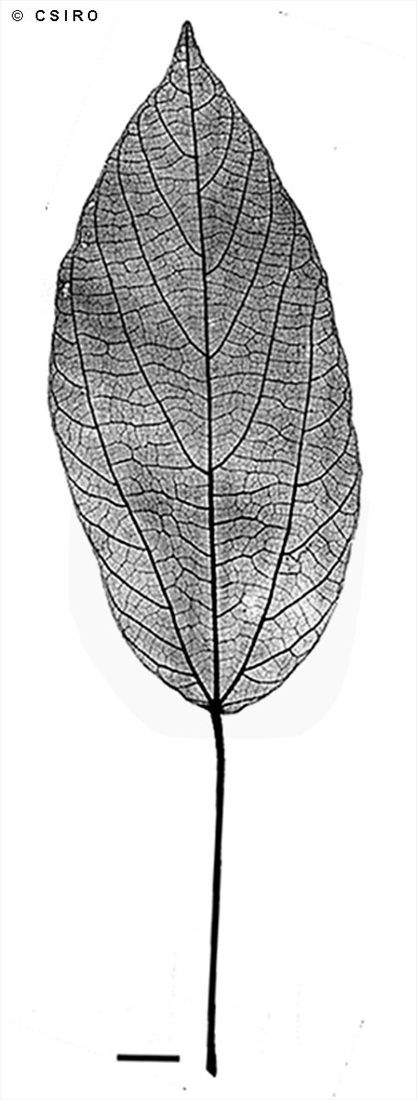Australian Tropical Rainforest Plants - Online edition
Mallotus philippensis (Lam.) Mull.Arg.








Mueller Argoviensis, J. (1865) Linnaea 34: 196.
Kamala Tree; Kamala-tree; Orange Kamala; Red Kamala; Kamala
Numerous small red scales visible with a lens on the underside of the leaf blade. Two small flat glands generally visible on the upper surface, at the base of the leaf blade. A pair of lateral veins extending well up the leaf blade impart a 3-veined appearance to the leaf. Leaf blades about 7-12 x 3-5 cm. Twigs and petioles often rust coloured. Younger leafy twigs longitudinally grooved.
Floral bracts inconspicuous, much smaller than the flowers at anthesis. Flowers about 2-3 mm diam. Outer surface of the tepals densely stellate lepidote and clothed in reddish glands. Anthers and staminal filaments with bright red glands. Ovary stellate hairy or stellate lepidote, but densely and almost completely clothed in reddish glands.
Capsules sparsely stellate hairy, but densely and completely clothed in reddish brown glands. Seeds +/- globular, about 4 mm diam.
Cotyledons ovate to almost orbicular, about 9-13 mm long, hairy on the upper surface. At the tenth leaf stage: leaf blade broadly ovate, apex acuminate, base obtuse, upper surface with a few hairs on the midrib and main lateral veins, lower surface with numerous small red glands visible with a lens; two flat glands sometimes occur on the upper side of the leaf blade near its junction with the petiole; petiole hairy; stipules hairy, very small, triangular, visible only with a lens. Seed germination time 31 to 120 days.
Occurs in NT, CYP, NEQ, CEQ and southwards as far as coastal central New South Wales. Altitudinal range from near sea level to 900 m. Grows in monsoon forest and drier rain forest. Probably frost tolerant as it persists along creeks and gullies on the Atherton Tableland. Also occurs in Asia, Malesia and the Pacific islands.
The outer covering of the fruit is dried and powdered. This preparation is regarded as one of the most effective agents for the expulsion of tapeworms. Also a fish poison.
Leaf material of this species was active against some tumors. Collins et al. (1990).
The chief medicinal use for this species is as a specific cure for tapeworms. Roots, stems and leaves are reported to contain prussic acid. Cribb (1981).





